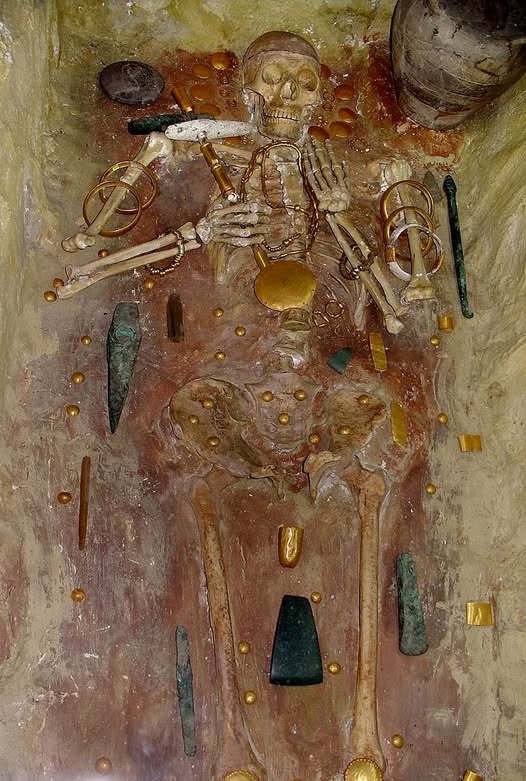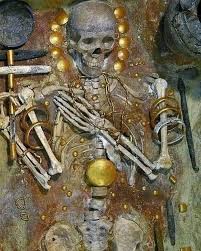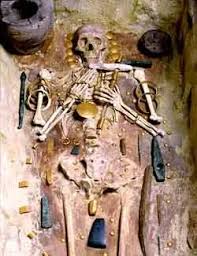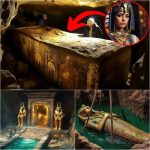The Golden King of Varna: Unearthing the World’s Oldest Treasure and Europe’s First Ruler

In the ancient necropolis of Varna, Bulgaria, archaeologists have made a groundbreaking discovery that rewrites the history of civilization itself. Dating back to 4,600–4,200 BC, the Varna Necropolis has revealed the world’s oldest known gold treasure—stunningly crafted long before the pyramids of Egypt were even built. This remarkable find challenges our understanding of prehistoric societies and their complexities.

Within grave 43 lies the skeleton of a powerful man, believed to be a ruler or high priest, buried with more gold than the rest of the world combined at that time. Surrounding him were exquisite necklaces, intricate scepters, and ornate masks, each piece symbolizing unimaginable power and wealth in a prehistoric world where such opulence was rare. The sheer volume and craftsmanship of these artifacts suggest a society far more advanced than previously thought, one that possessed the means and knowledge to create and appreciate artistry in metalwork.
This discovery marks the first evidence of social hierarchy and elite male leadership in Europe, shedding light on the dawn of organized society. The treasures unearthed at Varna signify not just wealth but also the emergence of complex social structures, paving the way for the development of governance, trade, and cultural identity. Scholars are now reevaluating the timeline of European history, recognizing that the roots of civilization may extend further back than once believed.

The treasures of Varna, now displayed in Bulgarian museums, continue to mesmerize historians and visitors alike. They whisper stories of a forgotten kingdom of gold, where power was not merely claimed but represented through magnificent artifacts that spoke to the divine right of leadership. The intricate designs and the sheer quantity of gold challenge the notion of a simplistic prehistoric culture, showcasing a society that engaged in trade, artistry, and ritualistic practices.
As archaeologists continue to study the site, questions abound: What other secrets lie buried in the Varna Necropolis? How did this civilization interact with neighboring cultures? The Golden King of Varna invites us to explore the complexities of early human society and the ways in which wealth and power were intertwined.

This extraordinary find not only enriches our understanding of prehistoric life but also serves as a reminder of the interconnectedness of human history. As we gaze upon the treasures that once adorned a ruler, we are transported back in time to an era where gold symbolized not just wealth, but the very essence of authority and civilization itself. The legacy of Varna continues to inspire curiosity and respect for the ancient world, urging us to uncover the stories that shaped our collective past.











